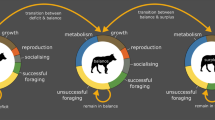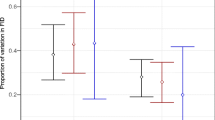Abstract
Birds are the best-studied taxa with respect to our knowledge about predation risk assessment. In the past 4 years, global progress in this field has been made due to a remarkable number of synthetic reviews, meta-analyses, and comparative analyses that are based on databases containing tens of thousands of observations on how birds escape from predators. In addition, novel empirical studies, often on more than one species at a time, have provided new insights into mechanistic diversity. Birds fly, walk, and swim away from approaching threats and the distance at which they do so—quantified as flight initiation distance—reveals much about their perceptions of predation risk. The contexts that influence risk assessment and management in both ecological and evolutionary time have largely been identified by thorough study of the life history, natural history, physiology, environment, and phylogenies of birds. We have also discovered continental and latitudinal differences in risk management. A large set of applied studies now use this knowledge to both increase our understanding of the vulnerability of birds to anthropogenic disturbance, and provide insight into how best to manage it. Future advances require: (1) developing a better understanding of the sensory mechanisms involved in risk assessment, (2) studies of individuals that are sampled repeatedly, and (3) the development of decision-support tools for wildlife managers to help us better coexist with birds in an increasingly urban world.

Similar content being viewed by others
References
Balmford A, Green JM, Anderson M, Beresford J, Huang C, Naidoo R, Walpole M, Manica A (2015) Walk on the wild side: estimating the global magnitude of visits to protected areas. PLoS Biol 13:1002074
Blumstein DT (2006) Developing an evolutionary ecology of fear: how life history and natural history traits affect disturbance tolerance in birds. Anim Behav 71:389–399. https://doi.org/10.1016/j.anbehav.2005.05.010
Carrete M, Martinez-Padilla J, Rodriguez-Martinez S, Rebolo-Ifran N, Palma A, Tella JL (2016) Heritability of fear of humans in urban and rural populations of a bird species. Sci Rep 6:31060. https://doi.org/10.1038/srep31060
Cooper WE, Blumstein DT (eds) (2015a) Escaping from predators: an integrative view of escape decisions. Cambridge University Press, Cambridge
Cooper WE Jr, Blumstein DT (2015b) Escape behavior: importance, scope, and variables. In: Cooper WE, Blumstein DT (eds) Escaping from predators: an integrative view of escape decisions. Cambridge University Press, Cambridge, pp 3–14
DeVault TL, Blackwell BF, Seamans TW, Lima SL, Fernandez-Juricic E (2015) Speed kills: ineffective avian escape responses to oncoming vehicles. Proc R Soc B 282:2188. https://doi.org/10.1098/rspb.2014.2188
Dolbeer R (2018) Wildlife strikes to civil aircraft in the United States 1990–2016. Serial report 23. Federal Aviation Administration National Wildlife Strike Database, Federal Aviation Administration
van Dongen WFD, Robinson RW, Weston MA, Mulder RA, Guay P-J (2015) Variation at the DRD4 locus is associated with wariness and local site selection in urban black swans. BMC Evol Biol 15:253. https://doi.org/10.1186/s12862-015-0533-8
Ducatez S, Audet J-N, Rodriguez JR, Kayello L, Lefebvre L (2017) Innovativeness and the effects of urbanization on risk-taking behaviors in wild Barbados birds. Anim Cognit 20:33–42. https://doi.org/10.1007/s10071-016-1007-0
Frid A, Dill LM (2002) Human-caused disturbance stimuli as a form of predation risk. Cons Ecol 6:11. [online] https://www.consecol.org/vol16/iss11/art11.
Garamszegi LZ, Møller AP (2017) Partitioning within-species variance in behaviour to within- and between-population components for understanding evolution. Ecol Lett 20:599–608
Garamszegi LZ, Mueller JC, Markó G, Szász E, Zsebők S, Herczeg G, Eens M, Török J (2014) The relationship between DRD4 polymorphisms and phenotypic correlations of behaviors in the Collared Flycatcher. Ecol Evol 4:1466–1479
Gendall J, Lill A, Beckman J (2015) Tolerance of disturbance by humans in long-time resident and recent colonist urban doves. Avian Res 6:7. https://doi.org/10.1186/s40657-015-0018-x
Glover HK, Guay P-J, Weston MA (2015) Up the creek with a paddle; avian flight distances from canoes versus walkers. Wetl Ecol Manage 23:775–778
Guay P-J, van Dongen WFD, Robinson RW, Blumstein DT, Weston MA (2016) AvianBuffer: an interactive tool for characterising and managing wildlife fear responses. Ambio 45:841–851. https://doi.org/10.1007/s13280-016-0779-4
Holling CS (1978) Adaptive environmental assessment and management. Wiley, Berlin
Holtmann B, Grosser S, Lagisz M, Johnson SL, Santos ESA, Lara CE, Robertson BC, Nakagawa S (2016) Population differentiation and behavioural association of the two “personality” genes DRD4 and SERT in Dunnocks (Prunella modularis). Mol Ecol 25:706–722. https://doi.org/10.1111/mec.13514
Jiang Y, Moller AP (2017) Antipredator escape distances of common and threatened birds. Behav Ecol 28:1498–1503. https://doi.org/10.1093/beheco/arx114
Livezey KB, Fernandez-Juricic E, Blumstein DT (2016) Database of bird flight initiation distances to assist in estimating effects from human disturbance and delineating buffer areas. J Fish Fish Wildl Manage 7:181–191. https://doi.org/10.3996/082015-jfwm-078
Lomas SC, Whisson DA, Maguire GS, Tan LX, Guay P-J, Weston MA (2014) The influence of cover on nesting Red-capped Plovers: a trade-off between thermoregulation and predation risk? Vic Nat 131:115–127
Møller AP (2014) Life history, predation and flight initiation distance in a migratory bird. J Evol Biol 27:1105–1113. https://doi.org/10.1111/jeb.12399
Møller AP (2015) Birds. In: Cooper WE, Blumstein DT (eds) Escaping from predators: an integrative view of escape decisions. Cambridge University Press, Cambridge, pp 88–112
Møller AP, Erritzøe J (2016) Brain size and the risk of getting shot. Biol Lett 12:20160647
Møller AP, Tryjanowski P (2014) Direction of approach by predators and flight initiation distance of urban and rural populations of birds. Behav Ecol 25:960–966. https://doi.org/10.1093/beheco/aru073
Møller AP, Samia DSM, Weston MA, Guay P-J, Blumstein DT (2014) American exceptionalism: population trends and flight initiation distances in birds from three continents. PLoS One 9:e107883. https://doi.org/10.1371/journal.pone.0107883
Rebolo-Ifran N, Carrete M, Sanz-Aguilar A, Rodriguez-Martinez S, Cabezas S, Marchant TA, Bortolotti GR, Tella JL (2015) Links between fear of humans, stress and survival support a non-random distribution of birds among urban and rural habitats. Sci Rep 5:13723. https://doi.org/10.1038/srep13723
Samia DSM, Blumstein DT (2014) Phi index: a new metric to test the flush early and avoid the rush hypothesis. PLoS One 9:e113134. https://doi.org/10.1371/journal.pone.0113134
Samia DSM, Moller AP, Blumstein DT (2015a) Brain size as a driver of avian escape strategy. Sci Rep 5:11913. https://doi.org/10.1038/srep11913
Samia DSM, Nakagawa S, Nomura F, Rangel TF, Blumstein DT (2015b) Increased tolerance to humans among disturbed wildlife. Nat Commun 6:8877. https://doi.org/10.1038/ncomms9877
Stankowich T, Blumstein DT (2005) Fear in animals: a meta-analysis and review of risk assessment. Proc R Soc Lond B 272:2627–2634. https://doi.org/10.1098/rspb.2005.3251
Symonds MRE, Weston MA, Robinson RW, Guay P-J (2014) Comparative analysis of classic brain component sizes in relation to flightiness in birds. PLoS One 9:e91960. https://doi.org/10.1371/journal.pone.0091960
Tyrrell LP, Fernández-Juricic E (2015) Sensory systems and escape behavior. In: Cooper WE, Blumstein DT (eds) Escaping from predators: an integrative view of escape decisions. Cambridge University Press, Cambridge, pp 322–342
Vincze E, Papp S, Preiszner B, Seress G, Bokony V, Liker A (2016) Habituation to human disturbance is faster in urban than rural House Sparrows. Behav Ecol 27:1304–1313. https://doi.org/10.1093/beheco/arw047
Wilson AJ, Réale D, Clements MN, Morrissey MM, Postma E, Walling CA, Kruuk LEB, Nussey DH (2010) An ecologist's guide to the animal model. J Anim Ecol 79:13–26
Ydenberg RC, Dill LM (1986) The economics of fleeing from predators. Adv Study Behav 16:229–249
Acknowledgements
I thank Blake Jones and Liana Zanette for inviting me to give a keynote address, upon which this paper is based, at the 2018 International Ornithology Congress Vancouver Symposium entitled Fear in Birds: the Consequences of Non-consumptive Predator–prey Interactions. I also thank two anonymous reviewers for constructive comments on the manuscript. Avian FID work is remarkably collaborative and I have learned a lot from some long-term collaborators including: Esteban Fernández-Juricic, Anders Møller, Diogo Samia, and Mike Weston. I’m also thrilled to be part of newer collaborations.
Author information
Authors and Affiliations
Corresponding author
Additional information
Communicated by K. L. Buchanan.
Publisher's Note
Springer Nature remains neutral with regard to jurisdictional claims in published maps and institutional affiliations.
This article is a contribution to the Topical Collection 27th International Ornithological Congress, Vancouver, Canada, 19–26 August 2018
Electronic supplementary material
Below is the link to the electronic supplementary material.
Rights and permissions
About this article
Cite this article
Blumstein, D.T. What chasing birds can teach us about predation risk effects: past insights and future directions. J Ornithol 160, 587–592 (2019). https://doi.org/10.1007/s10336-019-01634-1
Received:
Revised:
Accepted:
Published:
Issue Date:
DOI: https://doi.org/10.1007/s10336-019-01634-1




